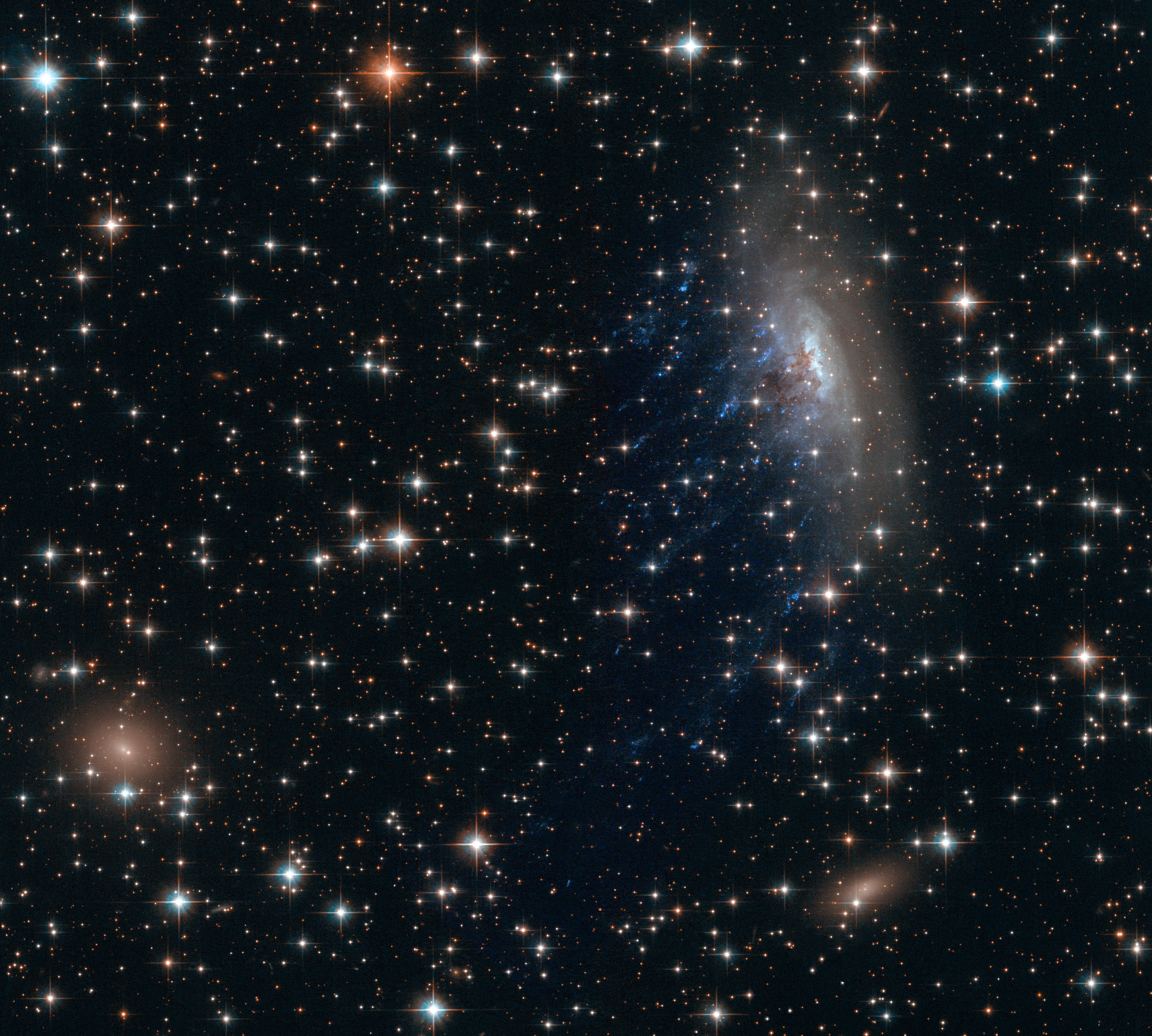ESO 137-001 Galaxy is a spiral galaxy located in the Centaurus constellation and situated within the Norma Cluster (Abell 3627). This galaxy constitutes a critical example for observing environmental interactions within galaxy clusters. ESO 137-001’s high-velocity movement toward the cluster causes it to form tail structures due to friction with the intracluster medium (ICM) gas it interacts with. This situation creates a significant research field in terms of both observational astrophysics and galaxy evolution.

ESO 137-001 Galaxy (NASA)
Descriptive Features
ESO 137-001 is morphologically classified as an unbarred spiral galaxy (type SA). It is located approximately 220 million light-years away (around 68 megaparsecs). The galaxy’s visual brightness has been measured at a moderate level through observations using broadband filters.
One of the most distinctive features of this galaxy is the formation of tails composed of gas emitting X-rays and Hα radiation as a result of its high-speed motion through the dense intracluster medium of the Norma Cluster. These tail structures have been imaged in detail using various observation instruments such as the Chandra X-ray Observatory, the Hubble Space Telescope, and the Very Large Telescope (VLT).
Tail Formation and Ram Pressure Stripping
As ESO 137-001 moves through the dense cluster environment, it loses some of the gas in its interstellar medium. This process is defined as ram pressure stripping and was first theoretically modeled by Gunn & Gott. Ram pressure stripping drags out the gas that is not gravitationally bound to the galaxy due to interaction with the hot and dense cluster medium. This results in the formation of long tails of hot gas and ionized hydrogen behind the galaxy.
ESO 137-001 is one of the most observable and clear examples of this process. Observations in the X-ray band indicate that the tail structure behind the galaxy extends roughly 70,000 light-years. These structures are significant for observing the role of environmental interactions in galaxy evolution.
Star Formation and Stars in the Tail
Spectral analyses along the tail have shown that in addition to ionized gas clouds, there are also regions of star formation. This indicates that star formation is taking place not only in the core of the galaxy but also along the tail. Star formation within the tail offers a favorable structure for investigating how internal galactic processes are altered through interaction with the cluster environment.
Observational Data and Multi-Wavelength Study
The structure of ESO 137-001 has been examined using multi-wavelength observations. X-ray data obtained from the Chandra telescope have mapped the distribution of hot gas, while Hubble images revealed the galaxy’s morphology and star-forming regions. Ionized regions emitting Hα radiation have been observed through optical spectrum analyses. Additionally, research has been conducted with the ALMA telescope array to study the presence of molecular gas.

ESO 137-001 Galaxy (NASA)
Importance in Terms of Galaxy Evolution
ESO 137-001 is a crucial example for studying the effects of environmental conditions within galaxy clusters on a galaxy’s morphology, gas content, and star formation. Studies conducted on this galaxy provide direct data to observe how large-scale structures (e.g., galaxy clusters) can influence the evolutionary processes of galaxies. At the same time, such processes seek to answer questions such as whether spiral galaxies are gradually transformed into gas-poor elliptical or lenticular galaxies.
ESO 137-001 is a well-documented case for observing the effects of ram pressure stripping in galaxy clusters. Multi-wavelength observations demonstrate that this galaxy is in complex interactions not only with its environment but also within its internal structure. In this context, studies on ESO 137-001 provide evidence of the sensitivity of galaxy evolution to environmental conditions.


